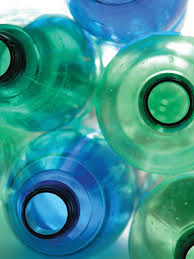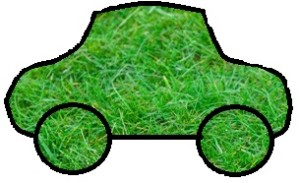Right, so here we are a month in to 2016 and I have no idea where 2015 went. The first half was a sleep deprived blur of newborn baby so I guess that at least explains where some of it disappeared to. Anyway, on to 2016 and my younger daughter has (finally!) moved into her new bedroom and I would like to get some furniture so that we can store her clothes (currently contained in a large cardboard box). The next question that springs to mind is how do I achieve this in an environmentally friendly way?
I have had a look at second hand furniture places locally but nothing suitable has come up so far. I have also signed up for the local Freecycle group in case anything becomes available there.
Looking at new furniture, there is plenty of cheap and cheerful stuff on offer but I would really like to get something that is designed to last and that is made in an ethical and sustainable way. Ideally I would like to get something that is made locally but whether that is possible without getting something bespoke (and most likely at huge expense!) remains to be seen.
It is probably worth saying at this point that my partner is a carpenter and so he is extremely talented at making things for our home. However, in this situation, the time and expense involved don’t really add up. I guess this is one of the issues with the vast quantity of cheap imported products available these days. In reality, it is difficult to buy the raw materials here to make something for the price of a brand new, finished piece of furniture.
At this point I am asking myself if we could make do with something we already have or perhaps specify a simpler piece of furniture which would be quicker for my partner to make. To be honest though, the cost of this in terms of both the materials and the number of working days needed to make any piece of furniture would be significant and it is really difficult to justify when we seem to have so many other things to fit into our everyday lives. We are still renovating our house so there are many, many things already on the carpentry to do list…
So that leaves the option of buying something. I am going to continue pursuing second hand options too though. I love the idea of a little project where I could buy a random scruffy item of furniture and sand it down and paint it. I really relish the opportunity to get creative so I am going to keep an eye out for something suitable just in case. However, I would still like to investigate other buying options too.
Furniture made from wood seems like an obvious place to start. So from a quick bit of Google research, furniture made from FSC certified wood is a good way to go as this accreditation requires that the timber should be sourced from woodland which is well managed in terms of environmental impact. There is also now increasingly some furniture available made from reclaimed wood (sourced from old houses, furniture etc).
This is all great in theory but when I start googling FSC furniture I am not getting many retailers coming up in the search results. I have also tried looking at the furniture section of the website of a big department store and they don’t mention FSC anywhere which is both surprising and disappointing. There are however some smaller businesses offering FSC furniture which are definitely worth a look. An alternative option is furniture made from recycled materials although again there don’t seem to be that many places offering this and the furniture I have seen so far is quite modern which only works in the right setting (our home is more rustic than refined!)
An additional consideration which hadn’t occurred to me until I started researching eco furniture is something called ‘offgasing’. This basically refers to items of furniture releasing substances into the air. Apparently everything does this and it is not a bad thing in itself however some offgas chemicals can be toxic. There is a certification scheme called Greenguard which requires furniture to be low toxicity. Untreated wood or natural finishes are also apparently less likely to offgas. The same applies to second hand furniture (assuming it isn’t old enough to have lead paint on it!)
As well as being aware of offgasing from furniture, it is also worth knowing that furniture, curtains, carpets etc may be coated in flame retardants. These are chemicals in powder form and there is some research linking them to health problems. Comments on some of the websites that I have looked at say that these chemicals are not even particularly effective at preventing fires. I am in no way qualified to comment on the science behind all of this but I don’t particularly like the idea of having potentially harmful chemicals in my home if it can be avoided. Apparently the best way to establish whether they are present is by checking the manufacturer’s label as it should contain information on whether a piece of furniture contains flame retardants. Natural products such as wool are also less likely to have had chemicals added.
OK, so what does this all mean for my daughter’s bedroom furniture? It means I will spend a little more time and effort on trying to source some second hand furniture which would avoid the perils of major offgasing and also avoids the need to chop down any trees (even FSC ones). If that doesn’t work out then we will save up and buy something new but from a sustainable source. Perhaps in the long term we can also add some items of furniture to the carpentry to do (wish)list!
(photo is from www.theecologist.org in an article about environmentally friendly underwear)







